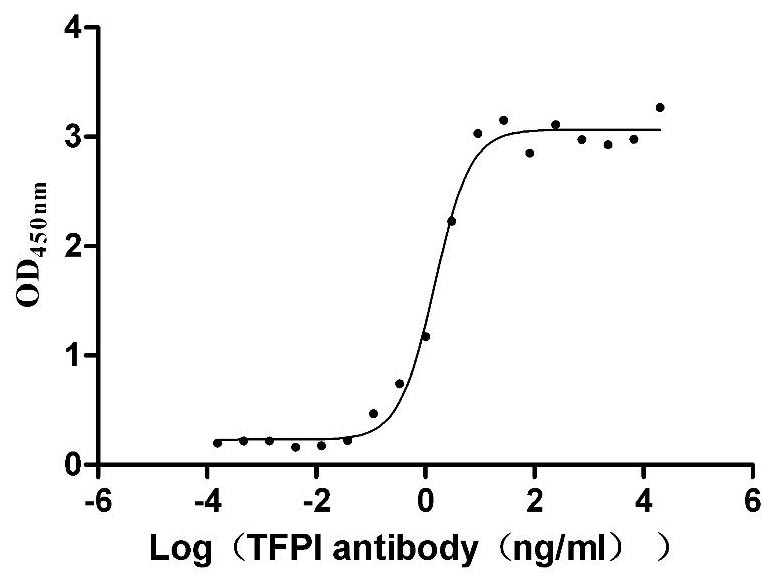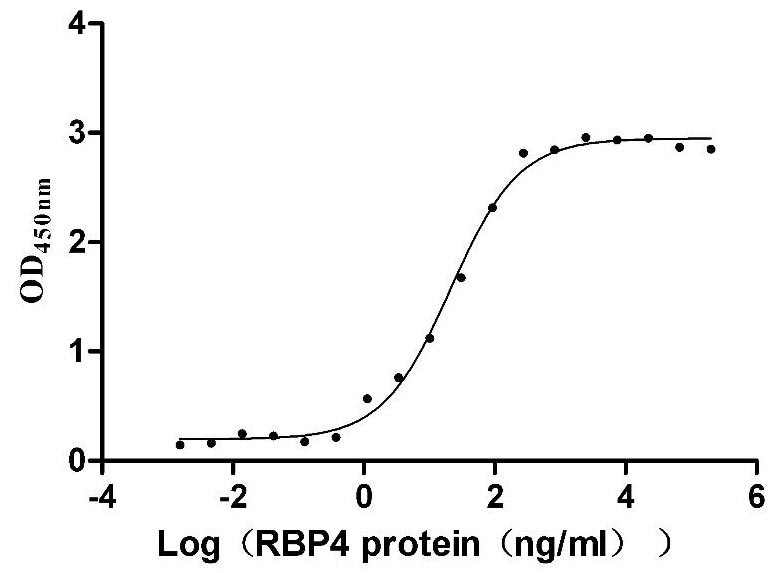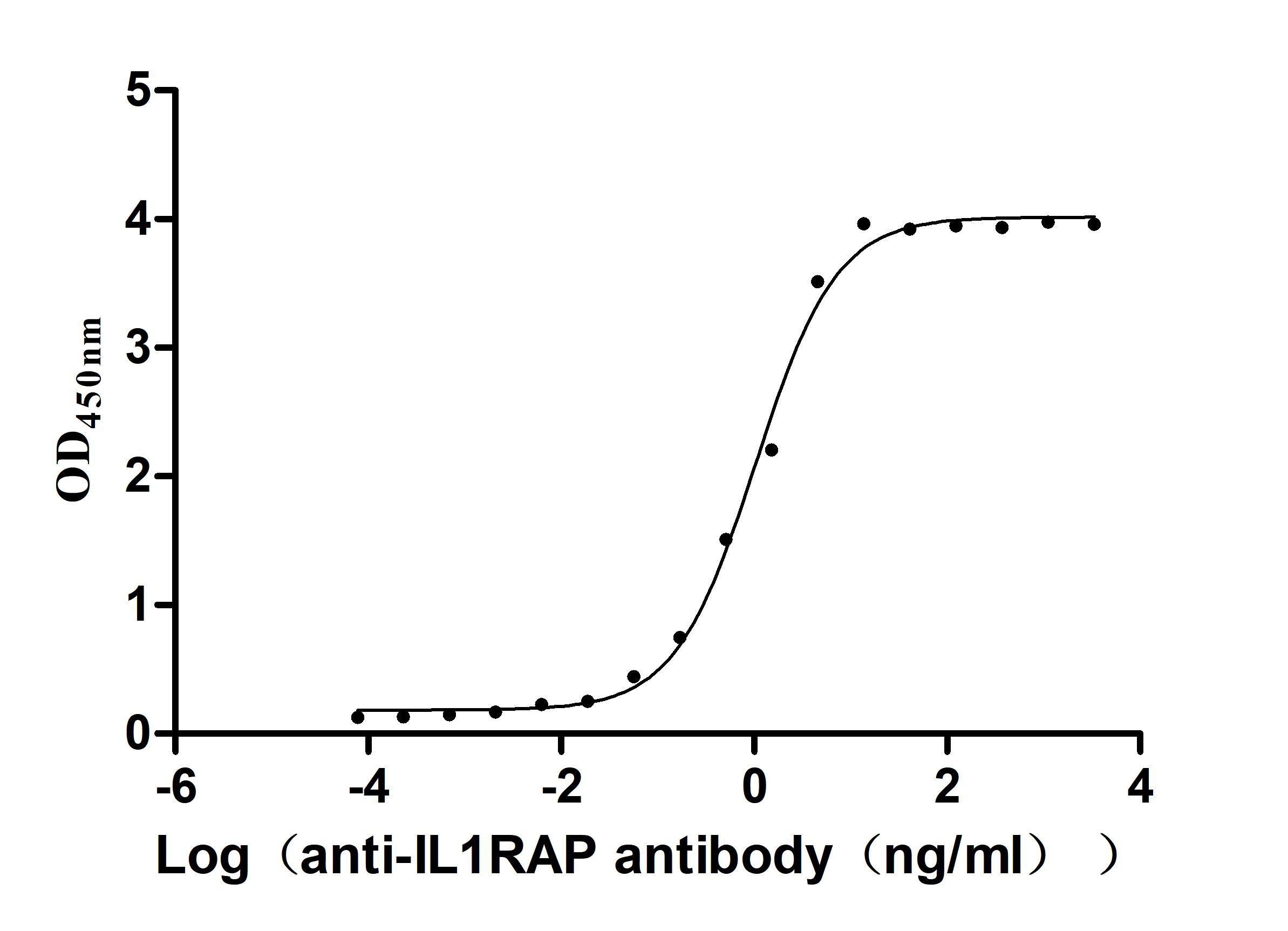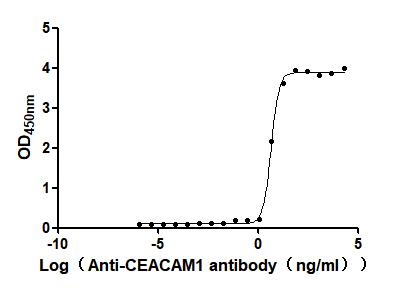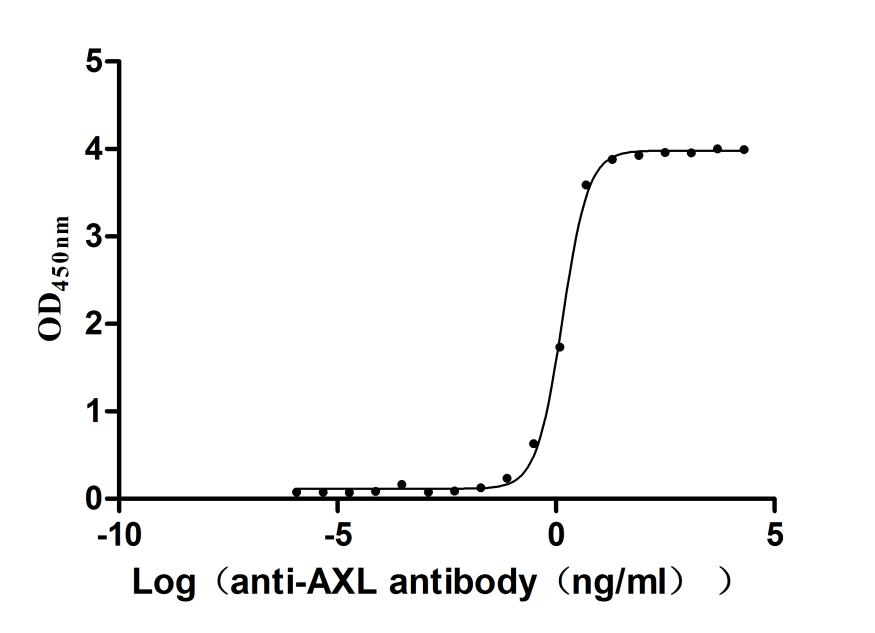Recombinant Mouse Chordin-like protein 1 (Chrdl1)
In Stock-
中文名稱:Recombinant Mouse Chordin-like protein 1(Chrdl1)
-
貨號:CSB-BP842075MO
-
規格:¥3168
-
圖片:
-
其他:
產品詳情
-
純度:Greater than 85% as determined by SDS-PAGE.
-
基因名:Chrdl1
-
Uniprot No.:
-
別名:Chrdl1; Ng1; Nrln1Chordin-like protein 1; Neuralin-1; Neurogenesin-1; Ventroptin
-
種屬:Mus musculus (Mouse)
-
蛋白長度:Full Length of Mature Protein
-
來源:Baculovirus
-
分子量:52.2 kDa
-
表達區域:23-447aa
-
氨基酸序列EQVKHSDTYCVFQDKKYRVGEKWHPYLEPYGLVYCVNCICSENGNVLCSRVRCPSLHCLSPVHIPHLCCPRCPDSLPPVNNKVTSKSCEYNGTTYQHGELFIAEGLFQNRQPNQCSQCSCSEGNVYCGLKTCPKLTCAFPVSVPDSCCRVCRGDAELSWEHADGDIFRQPANREARHSYLRSPYDPPPNRQAGGLPRFPGSRSHRGAVIDSQQASGTIVQIVINNKHKHGQVCVSNGKTYSHGESWHPNLRAFGIVECVLCTCNVTKQECKKIHCPNRYPCKYPQKIDGKCCKVCPEEPPSQNFDSKGSFCGEETMPVYESVFMEDGETTRKVALETERPPQVEVHVWTIQKGILQHFHIEKISKRMFGELHHFKLVTRTTLNQWKLFTEGEAQLSQMCSSQVCRTELEDLVQVLYLGRPEKDHC
Note: The complete sequence may include tag sequence, target protein sequence, linker sequence and extra sequence that is translated with the protein sequence for the purpose(s) of secretion, stability, solubility, etc.
If the exact amino acid sequence of this recombinant protein is critical to your application, please explicitly request the full and complete sequence of this protein before ordering. -
蛋白標簽:N-terminal 10xHis-tagged and C-terminal Myc-tagged
-
產品提供形式:Liquid or Lyophilized powder
Note: We will preferentially ship the format that we have in stock, however, if you have any special requirement for the format, please remark your requirement when placing the order, we will prepare according to your demand. -
緩沖液:Tris-based buffer,50% glycerol
-
儲存條件:Store at -20°C/-80°C upon receipt, aliquoting is necessary for mutiple use. Avoid repeated freeze-thaw cycles.
-
保質期:The shelf life is related to many factors, storage state, buffer ingredients, storage temperature and the stability of the protein itself.
Generally, the shelf life of liquid form is 6 months at -20°C/-80°C. The shelf life of lyophilized form is 12 months at -20°C/-80°C. -
貨期:3-7 business days
-
注意事項:Repeated freezing and thawing is not recommended. Store working aliquots at 4°C for up to one week.
-
Datasheet & COA:Please contact us to get it.
相關產品
靶點詳情
-
功能:Seems to antagonize the function of BMP4 by binding to it and preventing its interaction with receptors. Alters the fate commitment of neural stem cells from gliogenesis to neurogenesis. Contributes to neuronal differentiation of neural stem cells in the brain by preventing the adoption of a glial fate. May play a crucial role in dorsoventral axis formation. Antagonizes the function of BMP7 and may thus play an important role in the embryonic bone formation. Shows no inhibitory effect on the inducing activity of BMP2. Plays a role during anterior segment eye development.
-
基因功能參考文獻:
- CHRDL-1 is a new regulatory target of miR-134 during cortical neuronal differentiation; this is a novel role for miR-134 in the modulation of cortical development. PMID: 21228099
- Reperfusion injury of proximal kidney tubules causes a reduction of Chrdl1 expression. PMID: 19357253
-
亞細胞定位:Secreted.
-
組織特異性:Expressed in heart, brain, lung, liver, kidney and testis.
-
數據庫鏈接:
Most popular with customers
-
Recombinant Human Cytokine receptor common subunit beta (CSF2RB), partial (Active)
Express system: Mammalian cell
Species: Homo sapiens (Human)
-
Recombinant Human Claudin-18.2 (CLDN18.2)-VLPs (Active)
Express system: Mammalian cell
Species: Homo sapiens (Human)
-
Recombinant Human Tissue factor pathway inhibitor (TFPI), partial (Active)
Express system: Mammalian cell
Species: Homo sapiens (Human)
-
Recombinant Mouse Transthyretin (Ttr) (Active)
Express system: Mammalian cell
Species: Mus musculus (Mouse)
-
Recombinant Macaca fascicularis Interleukin 1 receptor accessory protein(IL1RAP), partial (Active)
Express system: Mammalian cell
Species: Macaca fascicularis (Crab-eating macaque) (Cynomolgus monkey)
-
Express system: Mammalian cell
Species: Homo sapiens (Human)
-
Recombinant Human Tyrosine-protein kinase receptor UFO(AXL),partial (Active)
Express system: Mammalian cell
Species: Homo sapiens (Human)

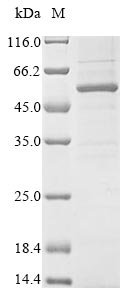

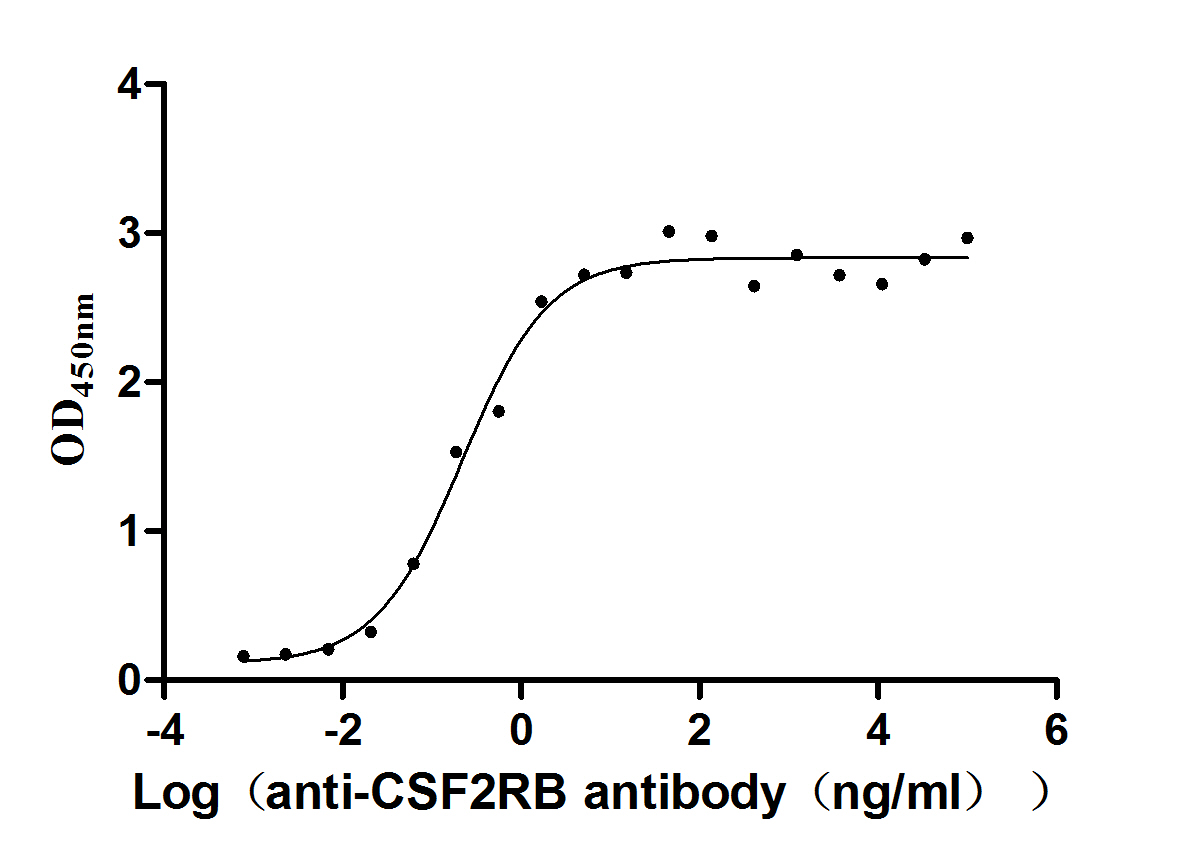
-AC1.jpg)
